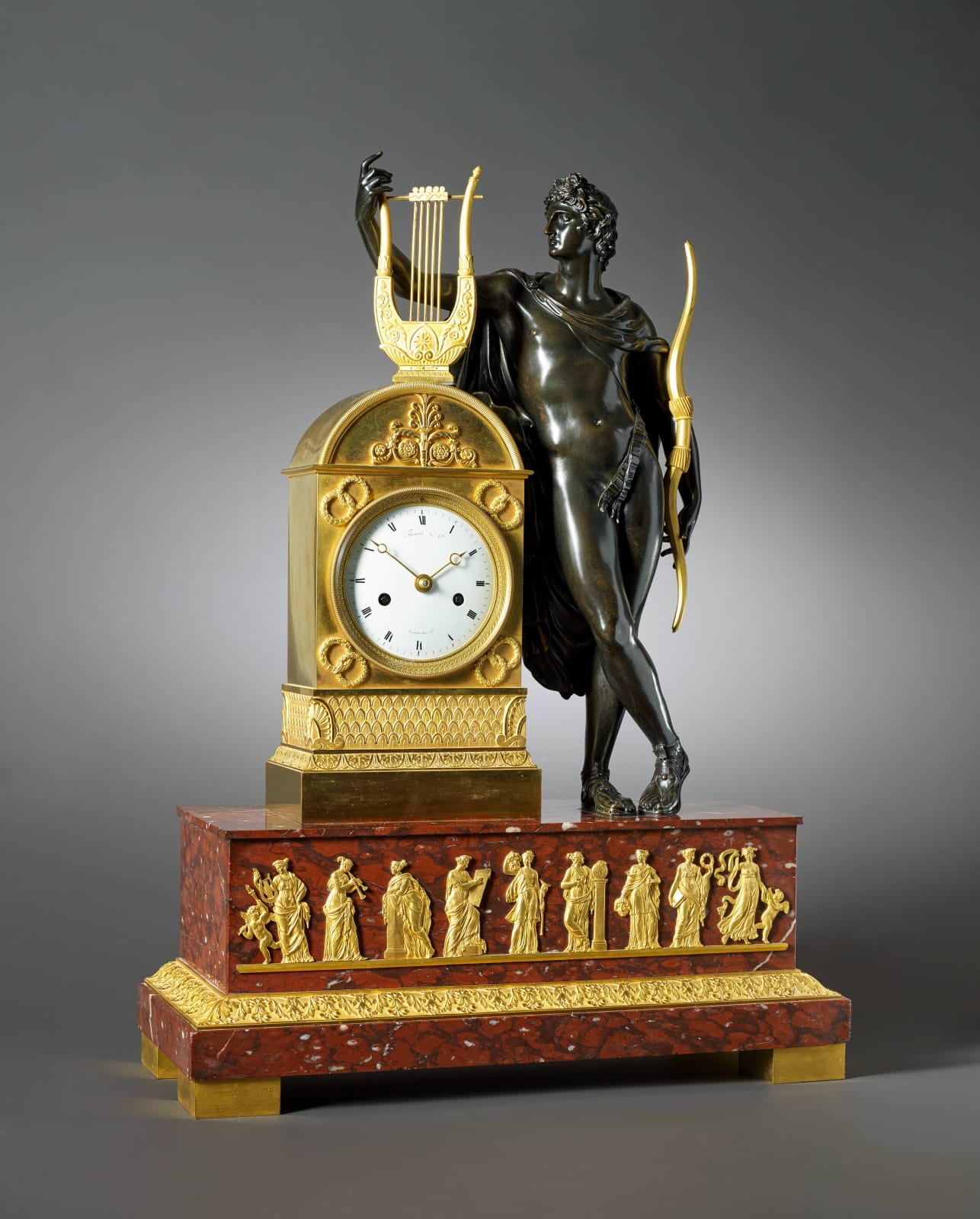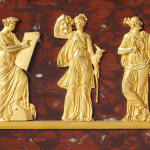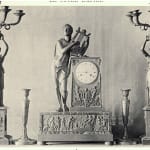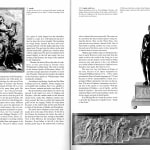
Hotel des Invalides, Cabiet de M. le Géneral, Directuer du Musée de l'Armée.

Elke Niehüser, "French Bronze Clocks, 1700 - 1830" p. 30 - 21
Louis Moinet
Further images
Literature
Cedric Jagger, ''Royal Clocks", 1983, p. 146, pis. 199 and 200, illustrating two clocks with cases by Thomire et Cie featuring almost identical figures of Apollo, both acquired by King George IV of England.
Tardy, "Les Plus Belles Pendules Françaises", 1994, p. 218, pi. LXI, illustrating a clock by Le Sieur a Paris, with an almost identical figure of Apollo, in the Musee des Arts Decoratifs, Paris. Louis Moinet (1768-1853), who was an eminent horologist and scholar, made the movement for this clock. He was born in Bourges and later worked in Paris with the pre-eminent clockmaker, Abraham-Louis Breguet (1747-1823) as his technical secretary.
A superb Empire patinated and gilt bronze and red marble figural clock of eight day duration, signed on the white enamel dial Moinet a Paris and also signed with the name of the esteemed bronze making firm, Thomire et Cte.
The dial with Roman numerals and a pair of gilt brass hands, striking on the hour and half hour on a single bell. The magnificent arched case surmounted by a lyre supported by the standing figure of Apollo holding a bow in his left hand, upon a stepped rectangular red marble base with applied gilt bronze figures of the nine Muses, on square gilt bronze feet
Paris, date circa 1825-30
Height 69 cm, width 50 cm, depth 20 cm.
Breguet entrusted Moinet with his notes and drawings with the intention that they were to be published. Moinet remained with Breguet until the latter's death but Breguet's treatise remained unpublished. In 1848 Moinet published his own treatise entitled "Nouveau Traite General Astronomique et Civil d'Horlogerie Theorique et Pratique", which Breguet's son maintained was based on his father's own work. There followed a number of lawsuits, which financially destroyed Moinet who eventually died in poverty; after his death his friends arranged a collection so that he could be buried at Pere-Lachaise.
Moinet's own work included various technical improvements including an optical means for checking the shape of teeth in clock and watch wheels and in 1851 presented a chronometer at the Great Exhibition of London. Moinet also supplied the movement for another case in malachite and gilt bronze featuring Apollo standing in a different pose. This and a companion thermometer were made by Thomire et Cie and purchased in 1828 for the British Royal Collection (Jagger, ibid. pp. 147-8).
The present clock is also housed in a superb case made by the renowned Parisian firm of Thomire et Cie, founded by Pierre-Philippe Thomire (1751-1843). In 1804 Thomire purchased the extensive business of the marchand-mercier, Martin-Eloi Lignereux, which enabled him to operate on a broader basis, as a retailer of furniture and decorative objects as well as maker of bronzes and furniture.
Thomire collaborated with three partners, renaming the business Thomire, Duterme & Cie, which rapidly achieved prominence and many Imperial commissions. But Thomire, like other Parisian firms suffered as a result of France's continuing wars; so to avoid bankruptcy the firm was granted a dispensation to trade with the Prince Regent (later George IV of England). Despite their close association with the Imperial House, the firm survived Napoleon's downfall. Soon after 1815 the partnership with Duterme was dissolved and under its new style, Thomire et Cie thrived once more under the restored Bourbons. P. -P. Thomire retired in 1823 at which point his two sons-in-law continued the business until 1852. Thomire continued to work as a sculptor and exhibited regularly at the Salon until 1834.
The figure of Apollo appears to relate to the famous Hellenistic statue of the Apollo Belvedere, which was rediscovered during the fifteenth century and was placed in the Vatican Museum, Rome. Like the Apollo Belvedere the dazzling hero is dressed only in a tunic and laurel crown with his arm raised as if he had just shot an arrow from his bow; here however his pose is reversed. Apollo represented the ideal form of male physical beauty, in the same way that Venus embodied female beauty. He was one of the twelve Olympian gods, the embodiment of the Greek spirit and symbolized the rational and civilized side of man's nature. According to mythology he was the son of Jupiter and Leto and was the twin brother of Diana. He was born on the island of Delos, where Leto had fled to escape the jealousy of Jupiter's wife, Juno. Apollo later became identified with the sun god Helios and was also considered the god of the bow and the lyre, each of which was worked by pulling strings. Here he is shown in his role as god of music and leader of the nine Muses, the goddesses of creative inspiration in the arts, poetryand song. Each Muse is represented in relief on the frieze panel below the clock itself.





